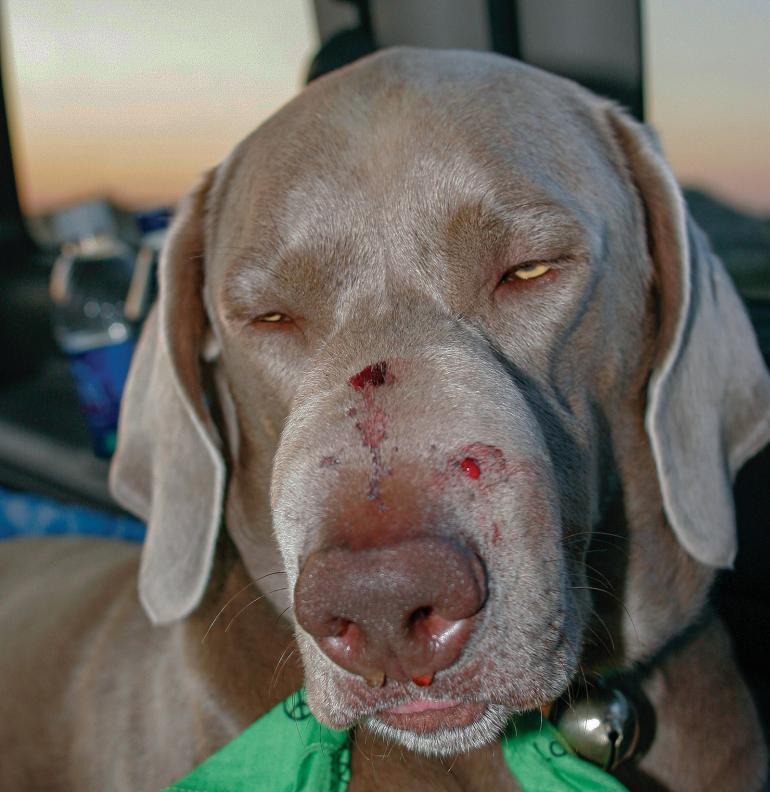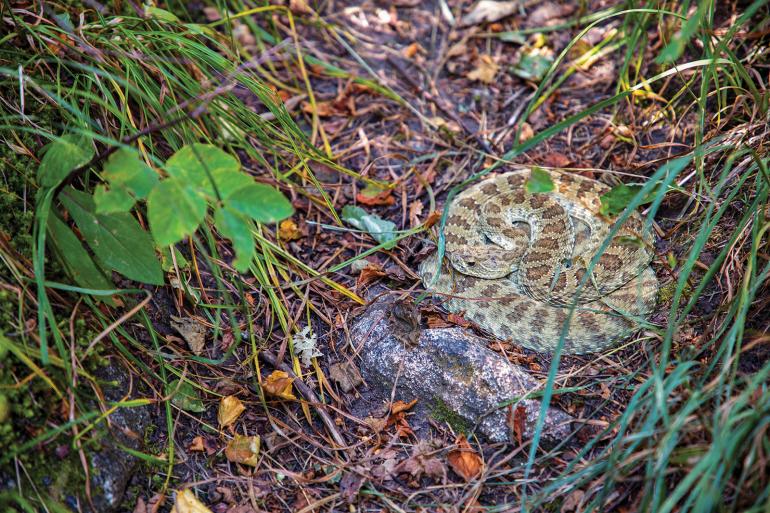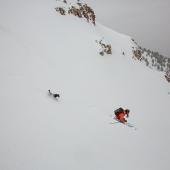The Snake Days of Spring
When dogs and rattlesnakes mix.
As the weather warms up, snakes emerge from their winter lairs. Fortunately, there’s only one venomous snake in Montana: the prairie rattlesnake. This serpent can grow up to four feet in length and comes in variety of colors, with the telltale rattle at the end warning predators of its presence. Rattlers also have a pair of hollow, hinged fangs that fold back against the roof of their mouth but extend when they strike. Tucked behind the fangs are the venom glands, which contain a variable amount of venom depending on the age and size of the snake. A bite frequently injects venom into the victim, but not always. It’s estimated that half of all snakebites are dry, or lacking venom.
If a rattlesnake bites your dog, it’s important to seek immediate veterinary care. Most dogs get bit on the face or lower limbs because they’re sniffing the snake. Clinical signs of snakebites include severe pain, swelling at the site of the bite, and in extreme anaphylactic reactions, collapsing. Neck swelling can obstruct breathing and cause respiratory distress. Snake venom can also cause mild to severe tissue damage, sloughing, and necrosis—the degree of which may not be fully apparent for up to 48 hours.
Treatment for snake envenomation can include pain management, broad-spectrum antibiotics, and supportive intravenous fluid therapy. Dogs with more advanced symptoms may require hospitalization and critical care if they received a larger dose of venom or are having a particularly severe reaction. Often times, however, the severity of envenomation cannot be determined right away.
Antivenom is the only direct and specific means of neutralizing snake venom. It’s most effective if administered in the first six hours after a bite, and can help reduce the overall severity of the venom’s effects. But it can be quite expensive, costing between $500-$600 per dose. It’s more critical to administer antivenom to a small dog than a larger one, because the ratio of venom relative to the animal’s size is greater.
The best way to prevent your dog from encountering a rattler is to be aware of your surroundings and keep your dog on a leash, remote collar, or voice control when hiking, hunting, or otherwise recreating in snake country. Another great way to keep dogs safe is to train them in a snake-avoidance class. The Bozeman-based Missouri Headwaters Gun Dog Club offers a class every year in August, and it’s open to non-members.
Jennifer Shinn is a triage, transfer, and inpatient-care veterinarian with Bridger Veterinary Specialists.












